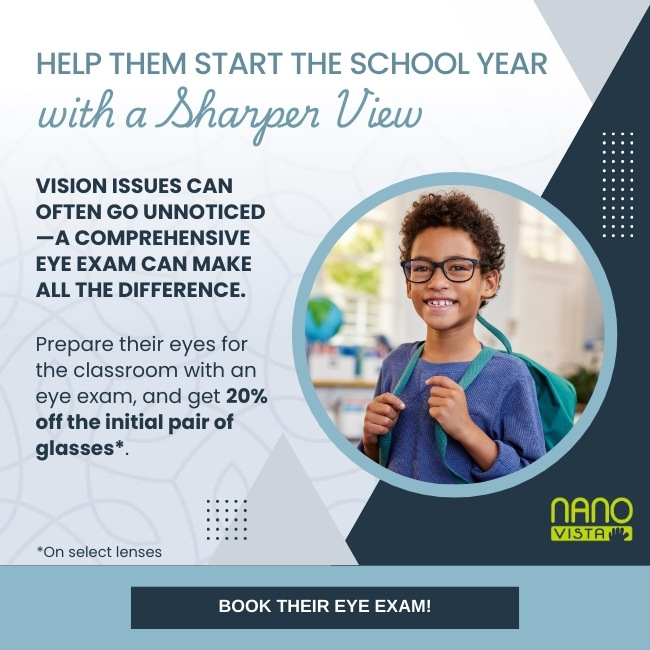It’s no secret that the modern world is getting more digital, which means we now spend more time in front of screens. Children are also using digital devices often for school and entertainment.
While digital devices have brought many benefits, they can pose some drawbacks too. So does screen time cause myopia? Take eye health and vision as an example. The increase in screen time can cause many problems, including myopia or nearsightedness.
A high percentage of learning is visual. And without regular children’s eye exams, undiagnosed vision problems can affect in and out-of-class activities. So, how much screen time is too much? Let’s find out.
What is Myopia?
Myopia (nearsightedness) is when your eyeball is too long or your cornea too curved, so the light that enters can’t focus properly. Light focuses in front of the retina instead of on it. Objects close up look clear, but objects in the distance are blurry.
There is a higher chance of inheriting myopia if one or both parents are nearsighted. Myopia usually develops in children. Since your eyes continue to grow, myopia progresses until your twenties.
Myopia and Screen Time
Even though many myopia patients inherit this condition, you can also develop myopia from other factors, including increased time spent looking at screens.
Over the years, children have been getting more involved with computers and most other devices from a young age. Myopia caused by too much screen time could be due to how differently we use our eyes when looking at a screen compared to when we use them normally.
Studies reveal that high levels of screen time are associated with around a 30% higher risk of myopia. And combined with excessive computer use, this increases the risk to around 80%.
Symptoms of excessive screen time in children include the following:
- Eye strain or fatigue from overuse of the eyes and glare from screens
- Headaches from eye fatigue
- Blurred vision when looking away after focusing at the same distance for some time
- Dry eyes from blinking less when focused on a screen
- Eye rubbing
- Squinting
Treatment for Myopia
There is no cure for myopia, but there are treatment options that offer clearer vision. These include:
- Eyeglasses: Eyeglasses are generally the first choice for refractive errors such as myopia. With myopia, you may only need to wear glasses for some activities. However, with high or progressive myopia, you may wear them all the time.
- Contact lenses: Contact lenses provide clearer vision and a wider field of vision than eyeglasses. Orthokeratology uses hard lenses, worn mainly at night, to help flatten the cornea and provide clearer vision during the day.
How to Prevent Myopia
Even though myopia is treatable, there are ways you can reduce myopic tendencies. We can’t remove digital devices from our lives; what we can do is follow healthy habits around screen time:
- Limit digital device usage before 2 years of age.
- Limit screen time in younger children.
- Use a digital device for shorter periods, and have limits of usage per day.
- Take frequent breaks by following the 20-20-20 rule—look away every 20 minutes at something 20 feet away for 20 seconds.
- Encourage children to spend more time outdoors to decrease time spent on near-vision activities.
- Remind children to blink more often to prevent dry eyes.
- Ensure a digital device is positioned slightly lower than eye level and increase the text size to avoid eye strain.
- Lowering screen brightness and placing devices away from windows and overhead lighting can reduce glare.
As a parent, you can look out for the following signs that may indicate your child is suffering from a vision problem such as myopia:
- Complains of headaches
- Moves closer to the TV
- Holds books closer to the eyes
- Excess tearing
- Sits at the front of the classroom to see the whiteboard
- Lacks interest in sports or other activities that require distant vision
Preserving Your Family’s Vision
With the increase in myopia rates among children, the amount of screen time is a cause of concern for many parents. The keys to preventing myopia and slowing myopia progression are changing habits and having regular eye exams.
Early detection during the childhood and teenage years can prevent further damage to the eyes. An eye exam today can support and maintain healthy eyes for tomorrow. Book an appointment with Doctors EyeCare Grand Prairie!




